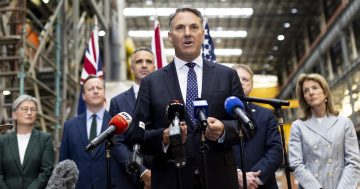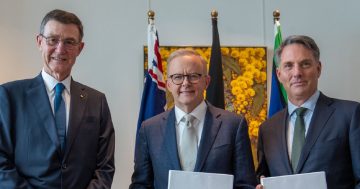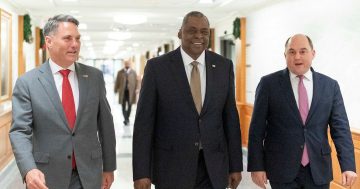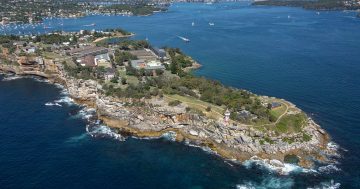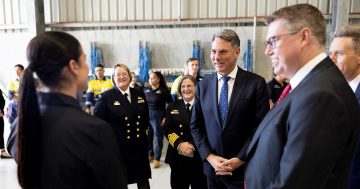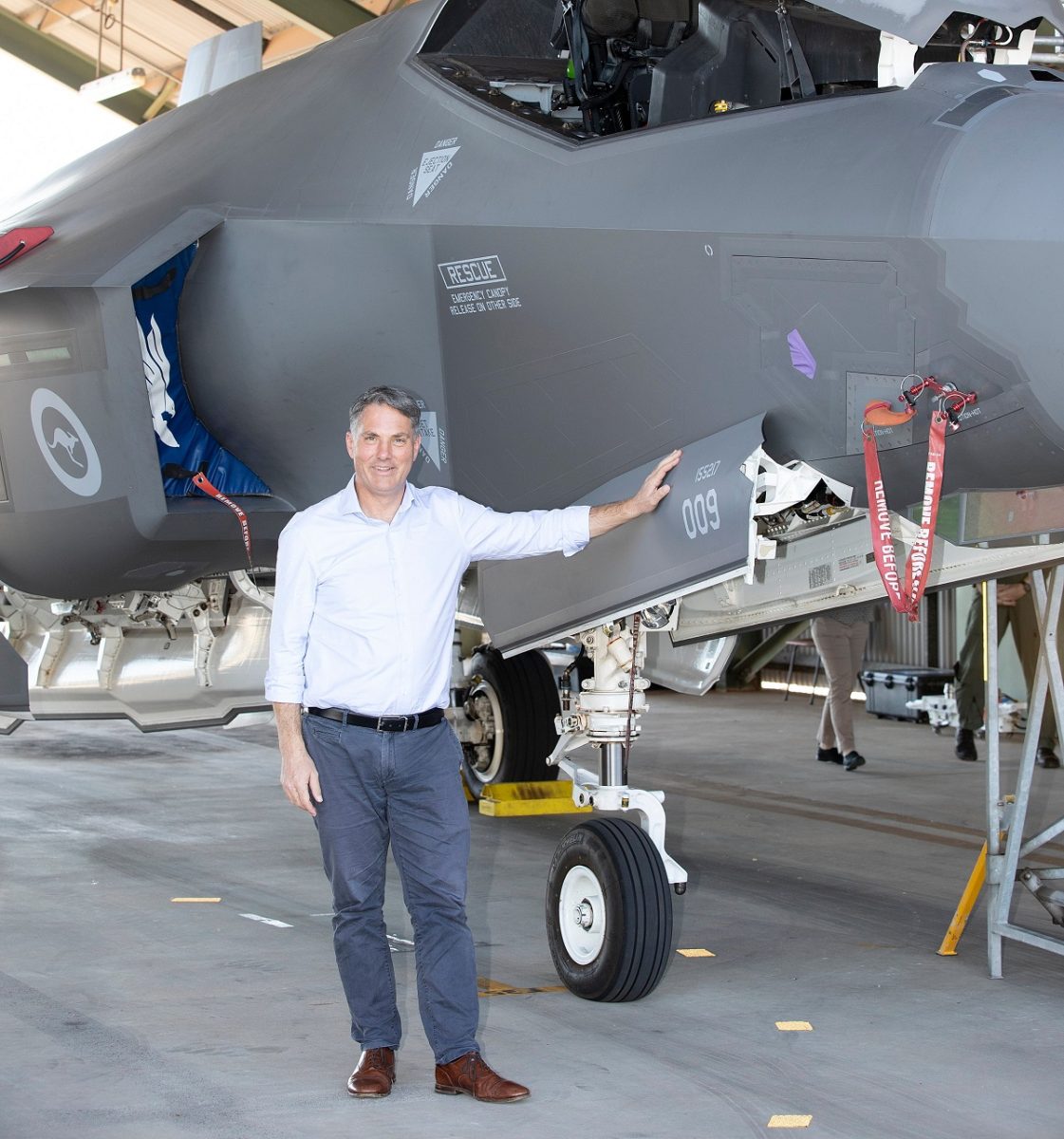
Deputy Prime Minister and Minister for Defence Richard Marles with an RAAF F-35A fighter. Photo: ADF.
Five months after assuming power, the Albanese Government handed down its first budget on Tuesday. By all reports, it was a conservative budget across all sectors from a government that sees itself as progressive, and that certainly applies to the Defence portfolio.
Most observers weren’t expecting much.
In August, Prime Minister Anthony Albanese, and Deputy Prime Minister and Defence Minister Richard Marles announced the appointment of former defence minister Stephen Smith and former Chief of Defence Force Air Chief Marshal (Ret’d) Sir Angus Houston to undertake a comprehensive Strategic Review of the Defence department, including the Defence Integrated Investment Plan which lays out current and planned projects and capital expenditure over the forward estimates period.
With the review due to report back to government by March 2023, it is therefore unsurprising that no major changes to the Coalition’s May budget were made, and we can instead expect any changes or new funding priorities to appear in next May’s 2023/2024 financial year budget. In addition to the review, the nuclear-powered submarine taskforce is also due to report before the next budget, which could see seed funding for that project starting to be fed into the forward estimates.
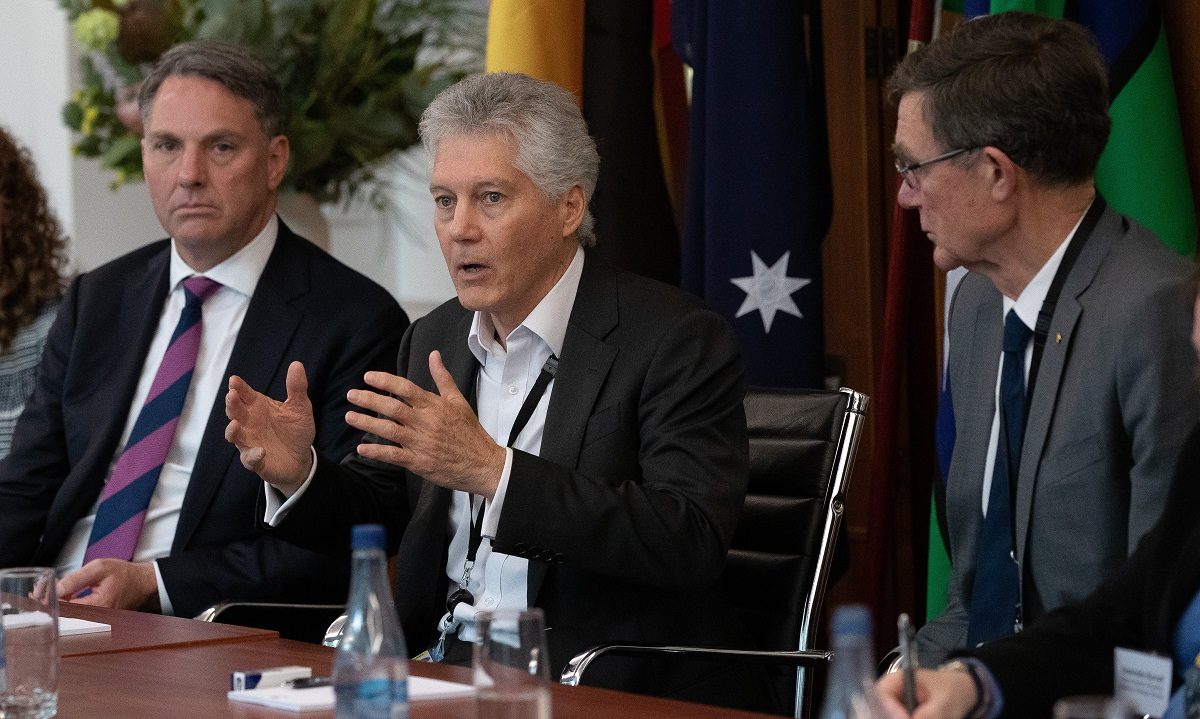
Deputy Prime Minister and Minister for Defence Richard Marles, former defence minister Stephen Smith, and former Chief of Defence Force Air Chief Marshal Sir Angus Houston (Ret’d). Photo: ADF.
The 2022/23 budget now sees $48.7 billion allocated to the Defence department for the year – including the Australian Signals Directorate (ASD) – an increase of just $85 million over the Coalition’s May budget. But, despite this increase and a bilateral commitment to increase the budget to keep it at or above two per cent of GDP, the October budget sees it dip just below this threshold as the budget fails to keep pace with inflationary predictions the GDP will increase by a whopping eight per cent. But it is forecast to catch up again over the forward estimates.
“The 2022-23 budget delivers on our election commitments and reinforces Defence’s readiness and capability to support our nation and promote stability and prosperity in our region,” the Deputy Prime Minister said in a statement released on budget night.
There are some minor funding changes in the October budget compared to May’s iteration, but these are primarily adjustments to take into account changes in the exchange rate between the US dollar and the weakened Australian dollar. These adjustments have added $382 million to the budget in FY 2022/23, which rises to more than $1 billion by FY 2025/26. As Australian Strategic Policy Institute (ASPI) senior analyst, Marcus Hellyer said in his post-budget wrap, “When you are the fourth biggest arms importer in the world, a weak Aussie dollar brings a lot of pain.”
Combined with the inflationary effects, Hellyer observes that, “It’s hard to see Defence being able to afford the ambitious acquisition program in its force structure plan with its budget stagnating in real terms. And while one of the Government’s key aims in the budget was to address cost of living pressures on Australians, Defence is getting no relief from the corrosive effects of inflation.”
This will likely be a factor in how the Government views the outcomes of the Defence Strategic Review, specifically, what projects can be deferred, reduced in size, or cancelled. This is especially the case as there will likely be some urgent and rapid capability requirements identified in the review to counter the perceived accelerated timetable of China’s geopolitical ambitions.
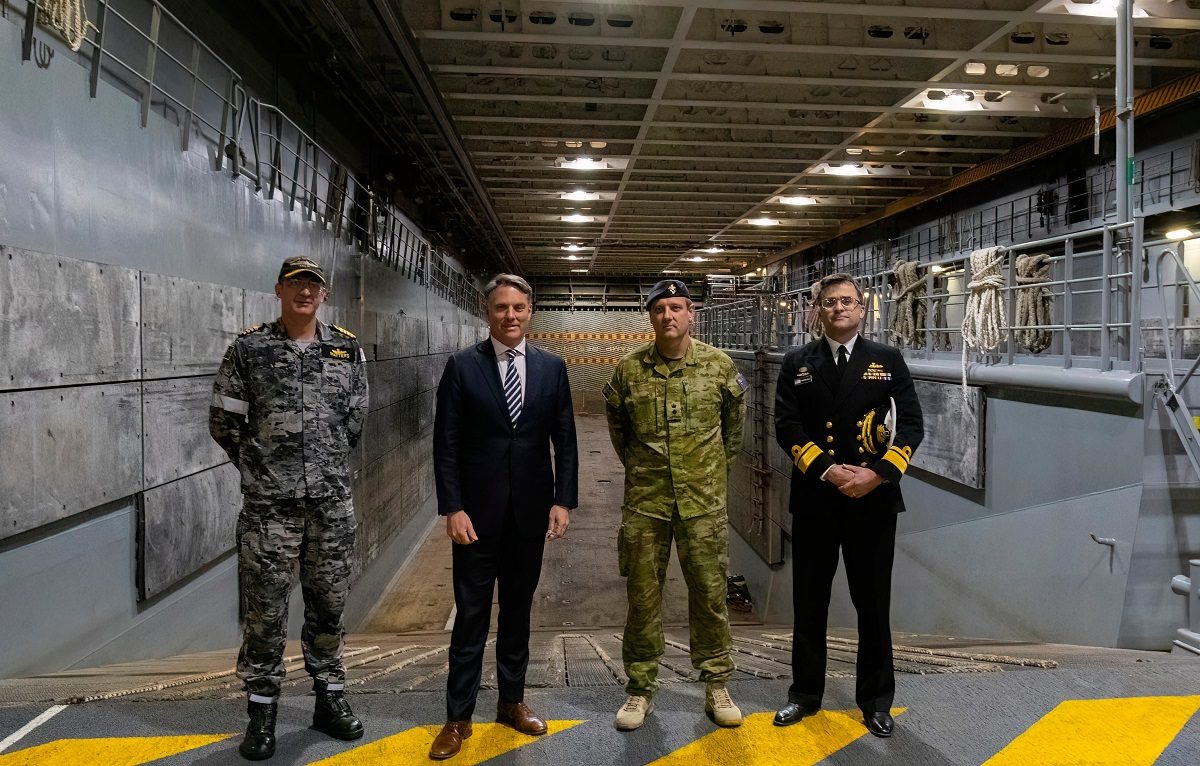
Deputy Prime Minister and Minister for Defence Richard Marles tours HMAS Adelaide with senior ADF personnel. Photo: ADF.
Some new capabilities with increased funding in the forward estimates include the Australian Army’s LAND 8116 self-propelled artillery, air force’s DEF 6114 Phase 2 MQ-28A uncrewed combat aircraft, army’s LAND 4503 Phase 1 Apache armed reconnaissance helicopters, a new $155 million undersea support vessel for the Royal Australian Navy under Project SEA 3022 Phase 5, and $213 million of military aid to Ukraine including $98 million which will be absorbed by Defence.
Funding for the Royal Australian Air Force’s new MC-55A Peregrine electronic support and MQ-4C Triton uncrewed maritime reconnaissance systems has been pushed back a year due to programmatic changes and developmental delays with those programs.
Somewhat Defence-related is the Government’s commitment to increase grants to Pacific nations from $500 million to $900 million in line with policy to deter China’s increasing presence in the region, and will likely involve increases in air force and navy activity.
“New measures in the 2022-23 budget prioritise valuable partnerships with Australia’s Pacific neighbours and delivers targeted investments in climate security, defence force capability and grants for our regions and communities, which make significant contributions to our Defence community,” a 25 October ministerial statement reads.












